Mastering Faucet Repairs: Fixing a Dripping Bathroom Faucet
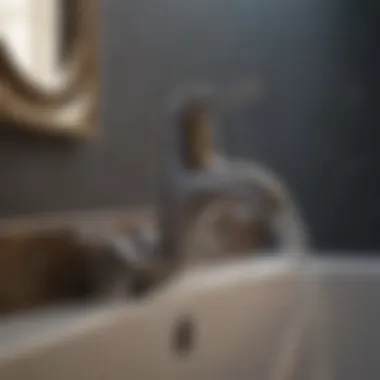

Intro
A dripping bathroom faucet is not just an annoying sound. It can also lead to more significant problems if left unchecked. Handling this issue promptly can save water, lower utility bills, and reduce wear and tear on plumbing.
Understanding the mechanics of your faucet and common causes of leaks is essential. This knowledge equips homeowners and renters with the tools to tackle repairs effectively. This guide aims to break down the steps you need to take to diagnose and repair a dripping faucet.
As we delve into the intricacies of faucet repair, we'll cover the typical causes of leaks, the necessary tools, and different repair techniques suitable for various faucet types. Let's empower you to handle this simple yet crucial home maintenance task.
Common Causes of Faucet Leaks
Faucet leaks can arise from various sources. Here are the most common culprits:
- Worn-out washers: These are small rubber disks that create a seal. Over time, they can wear down and cause drips.
- Corroded valve seat: This area connects the faucet and the spout. Corrosion can create gaps that lead to leaks.
- Loose parts: Sometimes, screws or components can loosen, allowing water to escape.
- Faulty O-rings: These are rubber rings that are used to seal the faucet. If they wear out, it can lead to dripping.
Identifying the specific cause is crucial for effective repair.
Tools Required for Repairs
Before starting the repair process, it’s beneficial to gather the necessary tools. Having everything handy will streamline the repair and save time:
- Adjustable wrench: Essential for loosening and tightening nuts.
- Screwdriver: Necessary for removing screws on the faucet.
- Replacement washers and O-rings: Be sure to have the correct sizes for your faucet model.
- Towel: To dry any spills and protect surfaces.
- Plumber’s grease: Helpful for lubricating parts to prevent further leaks.
With these tools ready, you can confidently proceed with the repair.
Step-by-Step Repair Instructions
Repairing a dripping faucet typically involves a systematic approach. Here is a general guide:
- Turn off the water supply: Locate the shut-off valves under the sink and turn them clockwise. If you cannot find these, shut off the main water supply.
- Drain the faucet: Open the faucet to allow any remaining water to escape.
- Disassemble the faucet: Use the screwdriver and wrench to remove the faucet handle and other parts carefully.
- Inspect the components: Look for worn or damaged parts, including washers, O-rings, and seals.
- Replace or repair: If you find any faulty components, replace them with new ones. Apply plumber's grease to ensure a proper fit and seal.
- Reassemble the faucet: Carefully put the parts back together, ensuring not to overtighten any screws or nuts.
- Turn the water supply back on: Slowly restore the water supply while checking for leaks.
Quality Maintenance Practices
Regular maintenance can extend the life of your faucet and prevent future leaks. Consider these practices:
- Inspect for leaks periodically.
- Clean faucet aerators regularly to prevent mineral buildup.
- Lubricate moving parts to reduce friction.
Remember: Proactive maintenance can save you time and money in the long run.
When to Call a Professional
In some cases, the leak may be a sign of a more severe plumbing issue. If after following these steps the faucet continues to drip, or if there are additional plumbing concerns, it is advisable to consult a professional plumber.
Preface to Faucet Repair
Repairing a dripping bathroom faucet is not just a matter of annoyance; it can also be a significant contributor to wasted water and increased utility bills. The importance of understanding how to repair a faucet lies in its potential to save money and contribute to efficient home maintenance. Homeowners and housewives often encounter household issues that seem daunting, but faucet repair is an accessible task that can be tackled with the right knowledge and tools.
A dripping faucet can indicate several underlying problems that, if left unresolved, may escalate into more complex issues. Learning the basic anatomy of faucets, the common causes of leaks, and the methods for repair can empower individuals to address such problems without immediate professional intervention. This independence not only fosters confidence but also promotes a culture of proactive home management.
In this article, you will explore the various types of faucets and their mechanisms, providing a foundation for understanding repairs. Comprehending the different parts and how they function allows for a more systematic approach when diagnosing and solving faucet issues. By investing time in this learning, one gains a valuable skill set that results in both monetary and resource savings.
From identifying worn washers to knowing when to call a plumber, this guide provides a thorough exploration of faucet repairs. Each section is designed to equip readers with the essential knowledge necessary for taking action.
"Understanding faucet repair not only aids in saving water but instills a sense of responsibility towards home maintenance."
Recognizing when to engage in repairs and the tools to do so is fundamental. Simple tasks such as shutting off the water supply or protecting the sink area can prevent further damage and create a smoother repair process. Familiarity with these steps underscores the significance of faucet repair in creating a well-maintained bathroom.
Understanding Faucet Types
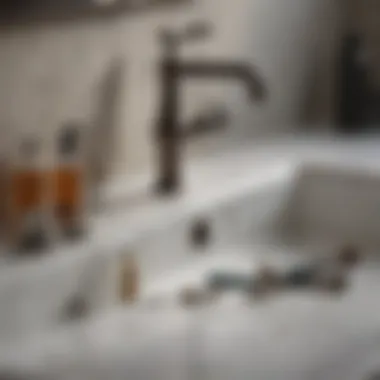

Understanding different types of faucets is essential for effective repairs. Each faucet design operates uniquely and has its own set of components. Recognizing these distinctions helps in accurately diagnosing leaks and informs the technical approach required for repairs. Homeowners can avoid costly mistakes by identifying their faucet type before starting a repair. Additionally, understanding faucet types can empower individuals to make informed decisions about replacement parts and maintenance practices.
Compression Faucets
Compression faucets are some of the simplest types used in bathrooms. They feature two handles, one for hot water and another for cold. When you turn the handles, a rubber washer compresses against a seat to stop water flow. Over time, these washers can wear out, leading to leaks. To repair a compression faucet, you usually need to replace the worn washer. This can be done quite easily by disassembling the faucet and removing the old washer. Some advantages of compression faucets include lower costs and ease of handling parts, making them accessible for DIY repairs.
Ball Faucets
Ball faucets use a different mechanism, where a single handle controls water temperature and flow. Inside the faucet, a rotating ball with holes regulates water flow. These types are commonly found in kitchen sinks but can also appear in bathrooms. Over time, the O-rings or seals may wear out, causing leaks. Repairs involve replacing these seals, which can require a bit more effort as the faucet must be disassembled carefully. The benefit of ball faucets is their sleek design and smooth operation, though they may necessitate more complex repairs compared to compression models.
Cartridge Faucets
Cartridge faucets utilize a cartridge instead of washers. The cartridge moves up and down or side to side to control water flow and temperature. If a leak occurs, it is usually due to a faulty cartridge that needs replacement. The process is fairly straightforward: remove the handle, extract the cartridge, and replace it with a new one. One significant advantage of cartridge faucets is their durability; they often last longer than compression faucets.
Ceramic Disc Faucets
This design incorporates a pair of ceramic discs to control water flow, which creates a very durable and reliable faucet. When leaks happen, they are typically due to wear on the ceramics or seals. Repairing a ceramic disc faucet involves disassembling the faucet to access the ceramic cartridge and replacing it as needed. Although slightly more complex to repair, these faucets are known for their modern appearance and long lifespan. Overall, they require less frequent repairs, making them a preferred choice for many homeowners.
Understanding the types of faucets helps empower homeowners to tackle repairs effectively and with confidence. By knowing the specifics of each type, one can prevent unnecessary expenses and repairs.
Common Causes of Faucet Leaks
Understanding the common causes of faucet leaks is essential for effective repairs. When a faucet drips, it can result in increased water bills and potential damage to cabinets and countertops. Identifying the source of the leak allows for timely intervention, saving both time and money. In addition, knowing the root causes equips homeowners with the ability to prevent future leaks.
Worn Washers
Worn washers are a frequent culprit for faucet leaks. Washers are small rubber or plastic discs that sit under the handle. They create a seal when the handle is turned off. Over time, these washers can become brittle and lose their shape, leading to water seeping through. Regular inspections of washers can prevent prolonged leaks. Replacing worn washers is a straightforward fix that can dramatically reduce dripping issues.
Faulty O-Rings
Another common issue involves faulty O-rings. O-rings are small rubber rings that provide seals in various turning points of the faucet. When these rings wear out or become deteriorated, it can cause leaks. Signs of faulty O-rings include water pooling around the base of the faucet. It is advisable to replace O-rings periodically as part of routine maintenance. This simple check can prevent larger problems down the road and keep faucets operational.
Corroded Parts
Corrosion can also lead to leaks in faucets. Metal components are susceptible to rust and corrosion, especially in humid bathrooms. Corroded parts can cause spaces where water can escape. Regular cleaning can help reduce corrosion, but once parts are severely corroded, replacement is often necessary. Investing in high-quality metal components can also reduce the risk of corrosion and extend the lifespan of a faucet.
Seating Issues
Seating issues refer to problems with the valve seat, which is the part that the washer or O-ring sits against when the faucet is turned off. If this surface is damaged or uneven, it can lead to leaks. Regular inspections can reveal seating issues early, allowing for timely repairs. Resurfacing or replacing the valve seat will typically solve the problem. Keeping the valve seat in good condition is essential for preventing leaks.
Tools and Materials Needed
Repairing a dripping bathroom faucet effectively requires the right tools and materials. Without them, the process can become inefficient or even impossible. Moreover, having everything ready before starting the repair process can save time and reduce frustration.
Essential Tools
A few basic tools are necessary for the faucet repair task. Here are the key tools to have on hand:
- Adjustable Wrench: This tool is critical for loosening and tightening various components of the faucet.
- Screwdrivers: A flat-head and Phillips screwdriver will be needed. Different screws may require different types, and having both kinds available makes disassembly more efficient.
- Pliers: They can help grip small parts securely, aiding in removal or adjustment without damage.
- Basin Wrench: This is necessary for reaching difficult areas under the sink, where space is tight.
These tools allow for more precise handling of faucet repairs, ensuring all components function optimally.
Replacement Parts
Replacement parts are essential to restore the faucet's function. Identifying which parts need replacement involves inspecting the faucet itself. Common parts needing replacement include:
- Washers: Often the cause of leaks, these should be replaced regularly.
- O-Rings: These seals degrade over time, leading to leaks.
- Cartridges: Specific to cartridge faucets, these may need changing if the faucet is persistently dripping.
- Springs: Found in many types of faucets, springs can become damaged and need replacement to ensure proper functioning.
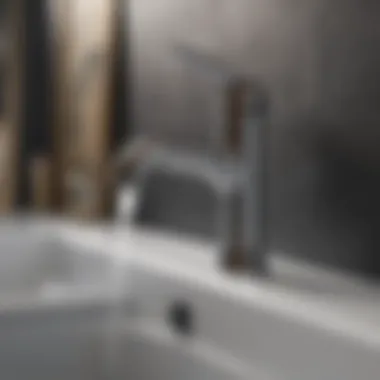
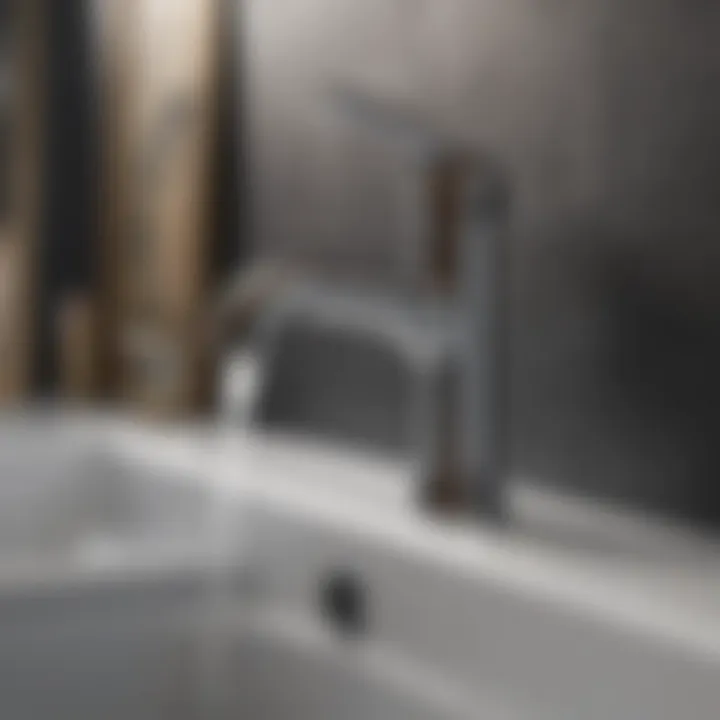
Knowing the right type of part to replace is crucial. Consult the faucet’s brand and model to ensure you purchase the correct parts.
Safety Equipment
Safety should not be overlooked during repairs. Consideration for safety equipment ensures a smooth process. The following items can help safeguard against potential hazards:
- Safety Goggles: Protecting the eyes is essential, especially when using tools that could cause debris to fly.
- Gloves: Wearing gloves is a good practice. They protect hands from sharp surfaces or materials that may cause injury.
- Non-slip Shoes: Since repairs often occur in potentially wet areas, wearing slip-resistant footwear is important to prevent falls.
By using proper safety equipment, you ensure that the repair process is as safe as possible, paving the way for a successful outcome.
Preparing for the Repair
Preparing for a faucet repair is crucial. It helps reduce the risk of further damage and ensures that the repair process goes smoothly. Without proper preparation, you may encounter more problems than necessary. Knowing the right steps to take before starting the repair is essential for success.
Shutting Off the Water Supply
The first step is to shut off the water supply. Locate the shut-off valves under the sink. Turn them clockwise to stop the water flow. This step prevents any unexpected leaks while you are working. Failing to turn off the water might lead to a messy situation, with water spraying everywhere.
If there are no individual shut-off valves, you will need to turn off the main water supply for your home. This might require going to your basement or utility area. Observe carefully. It is wise to check that there is no water leaking before you begin taking apart the faucet.
Gathering Your Tools
Next, you must gather the appropriate tools for the repair. Having everything ready before you start saves time and effort. The basic tools you may need include:
- Adjustable wrench
- Screwdriver (flat and Philips head)
- Pliers
- Replacement parts like washers and O-rings
It's helpful to have a small container to hold screws and parts while working, preventing them from getting lost. Ensuring you have the correct replacement parts can greatly simplify your repair process. This step can save you from frequent trips to hardware stores during the repair.
Protecting the Sink Area
Finally, protect the sink area while you are working. This step keeps your space clean and avoids any potential damage to surfaces. You can use towels or a soft cloth under the faucet. This helps catch any water that may leak out during disassembly.
Additionally, placing a small bowl under the sink can catch small parts that may fall during the repair. Keeping the area tidy makes the job easier and more effective. After taking these precautions, you will be ready to start repairing your faucet.
Step-by-Step Repair Guide
The Step-by-Step Repair Guide is a crucial segment in this article. It takes readers through the practical aspects of fixing a dripping bathroom faucet. This detailed section is designed to empower individuals not only to understand the process involved but also to gain confidence in their own abilities to handle such repairs. Following a structured approach minimizes the chances of making mistakes during the repair and can save both time and money. By comprehensively detailing each phase, from disassembly to reassembly, the guide ensures readers grasp the significance of every action taken.
Disassembling the Faucet
To begin with, disassembling the faucet requires careful attention and methodical action. Start by using the appropriate screwdriver to remove any visible screws. Most faucets have a decorative cap that must be pried off gently to reach these screws. Once the screws are out, lift the handle off. Some faucets may have a retaining nut that needs to be unscrewed to allow for easy removal of the faucet body. Keep track of every component, as they are essential for the reassembly process. Store them in a container to avoid misplacing any parts.
Inspecting Parts for Damage
After the faucet is disassembled, inspect each part thoroughly. Look for signs of wear including cracks, corrosion, or bent components. Pay close attention to washers, o-rings, and seals; these parts are often the culprits behind leaks. A magnifying glass can be helpful in detecting subtle damage. If you observe significant wear, note each part that requires replacement. This step is crucial as it ensures all defective components are addressed, preventing future leaks.
Replacing Worn Parts
With damaged parts identified, it's time to replace them. Search for similar replacements, either by visiting a local hardware store or online retailers. Ensure compatibility with the specific faucet type. When you have the new parts, carefully install them in the same sequence as removed. Pay particular attention to the positioning of washers and o-rings, ensuring a snug fit. Always follow the manufacturer's specifications to avoid issues post-repair. A well-replaced part can significantly extend the life of your faucet.
Reassembling the Faucet
Finally, upon replacing the worn parts, reassemble the faucet. Start with the main body, replacing it carefully to align with the handle and screw placements. Tighten screws firmly but avoid overtightening, which can lead to damage. Replace the decorative cap if there was one. Once the faucet is completely reassembled, revisit every connection to ensure they are secure. This ensures a proper seal is formed when the water supply is turned back on, ultimately diminishing the chances of recurrence for dripping issues.
Testing the Repair
After you have completed fixing your dripping faucet, testing the repair is an essential step that should not be overlooked. This process ensures that the faucet operates correctly and that no leaks persist. Failure to check your work can lead to wasted water and possibly more significant plumbing issues over time. Moreover, a thorough testing process helps validate your repair efforts, providing you with confidence in your skills to handle future repairs.
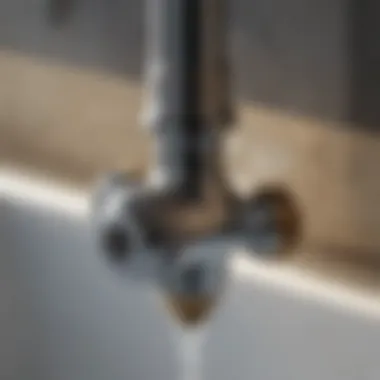
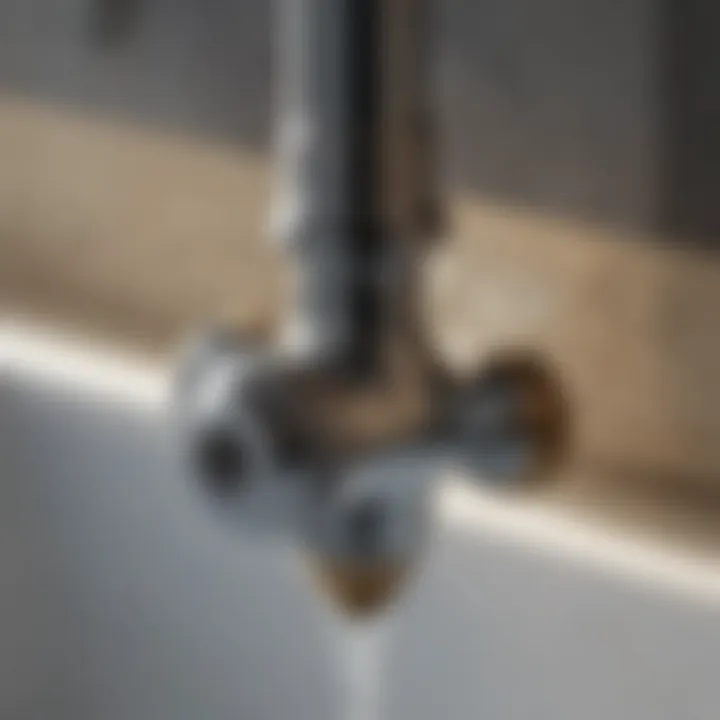
Turning the Water Supply Back On
Before turning the water supply back on, ensure that all parts of the faucet have been reassembled correctly. This includes checking that all screws are tightened and that no tools are left in the sink. Turning the water back on involves locating the shut-off valve, which is often beneath the sink. Slowly open the valve to avoid sudden pressure that might stress the newly fixed components. Once the water is flowing, observe how the faucet reacts. Listen for unusual sounds or signs of distress that may indicate improper installation or malfunctioning parts.
Checking for Leaks
After restoring the water supply, the next step is to check for leaks. Place a towel or a bowl under the faucet to catch any drips that might occur as you perform this test. Begin by inspecting the area around the faucet base and under the sink where plumbing connections exist. Keep an eye open for moisture accumulation or dripping water. If water appears, it can mean that some seals or connections were not fitted snugly or that further adjustment is necessary.
- Tightly Examine the Faucet: Look closely at the area where the faucet connects to the sink. Leaking here indicates a need for further tightening.
- Test the Faucet Handle: Turn the faucet handle on and off repeatedly, checking for any leaks that may develop when the faucet is in use.
- Watch for Drips: If you see drips, try tightening parts gently to see if it improves the situation.
Whatever you do, ensure thorough checks are done after repair. Detailed testing and adjustment are necessary to ensure lasting repairs.
When to Call a Professional
It is critical to understand when to call a professional for faucet repairs. While many homeowners can handle simple fixes, some issues may require specialized skills and tools. Knowing the right moment to seek expert help can save time, money, and frustration.
Identifying Complex Issues
Some problems with a dripping faucet are not straightforward. For instance, if multiple leaks appear or if your faucet continuously drips after repairs, there might be underlying plumbing issues. More complex concerns include corroded pipes, water pressure irregularities, or issues linked to the home's plumbing system rather than just the faucet. In such scenarios, calling a professional plumber becomes essential.
Plumbing experts can conduct comprehensive inspections. They have the experience to identify not only visible leaks but also hidden issues that could escalate if left unattended. Ignoring these signs can lead to extensive damage, risking expensive repairs in the future. Thus, professional insight can be invaluable in preventing larger problems.
Evaluating Time and Costs
Time and cost considerations often dictate whether to DIY or hire a professional. Repairing a faucet may seem economical, but if the repair turns out to be complicated, it may take several hours. This could interfere with daily routines and responsibilities.
Additionally, professionals may be able to provide faster service. They often have greater access to parts and tools necessary for the repair. On the other hand, if the task becomes too challenging, the cost of additional materials and wasted time can exceed the cost of hiring an expert.
Weighing these factors is crucial. If you are uneasy about any part of the repair process or if you begin to encounter unexpected complications, it's wise to reach out to professionals. Doing this may ultimately lead to more efficient and effective resolution of the issue.
Preventive Maintenance for Faucets
Preventive maintenance is a critical aspect of faucet care that often goes overlooked. Regularly maintaining faucets not only enhances their longevity but also significantly reduces the risk of leaks and the need for costly repairs. Homeowners should acknowledge the importance of this maintenance approach as it ensures smooth operation and can help avoid inconvenient plumbing emergencies.
Regular Inspections
Conducting regular inspections on bathroom faucets is essential for identifying potential issues before they develop into serious problems. During these inspections, look for signs like water stains or mineral buildup. These can indicate a developing leak.
Additionally, check for any unusual noise when the faucet is turned on; this could suggest a problem in the internal mechanisms.
Create a routine, perhaps once every few months, to evaluate your faucet. This proactive measure can help in catching issues early and often saves money in the long run.
Cleaning and Upkeep
Faucets can accumulate dirt and mineral deposits over time, impacting both their appearance and functionality. It is vital to keep them clean. Use gentle cleaners that are safe for the faucet's finish. A soft cloth combined with a vinegar solution can effectively remove buildup without causing damage.
Regular cleaning not only maintains aesthetic appeal but also contributes to preventing corrosion and prolonging the life of the faucet. If the faucet has aerators, they should also be cleaned regularly as debris can lead to reduced water flow.
Right Water Pressure
Maintaining the correct water pressure is vital for the proper functioning of faucets. High water pressure can lead to leaks and stress the internal components of the faucet, leading to premature wear. Homeowners should measure water pressure, ideally within the range of 40 to 60 psi.
Using a pressure gauge can help in determining the water pressure in your home. If pressure readings are too high, installing a pressure-reducing valve may be necessary. This essential step not only protects your faucets but also benefits the overall plumbing system in the house.
Maintaining faucets through preventive measures reduces the chance of leaks and costly repairs, ultimately leading to a more efficient home.
By consistently performing these preventive maintenance tasks, homeowners can ensure that their faucets function properly and that they avoid future plumbing issues.
The End
The potential savings from avoiding professional plumbing services can be substantial, especially in a time where costs are rising. Beyond monetary benefits, fixing leaks prevents water wastage, which is crucial in the context of global water conservation efforts. A dripping faucet can waste multiple gallons of water over a short period, contributing to higher water bills and unneeded strain on local water supplies.
When considering the importance of preventive maintenance, homeowners should recognize that regular checks on their plumbing fixtures can avert larger issues down the line. The knowledge gained through the repair process encourages a proactive approach to household upkeep.
Moreover, as should be noted, some situations may warrant professional intervention. If a problem is beyond the do-it-yourself scope, acknowledging this early can prevent further damage and escalating repair costs.
Ultimately, this article serves as a valuable guide, equipping readers with essential skills to manage minor repairs effectively while enhancing their understanding of home maintenance.



